StyleVision Server is based on the built-in report and document generation engine developed for Altova StyleVision.
StyleVision Server renders XML, SQL databases, and/or XBRL data into HTML, RTF, PDF, pure text, or Microsoft Word files based on StyleVision stylesheets and supporting design elements defined using StyleVision. Report designs can include dynamic content elements including tables and beautiful charts, images, bar codes, headers and footers, and much more.

StyleVision Server is based on the built-in report and document generation engine developed for Altova StyleVision.
StyleVision Server renders XML, SQL databases, and/or XBRL data into HTML, RTF, PDF, pure text, or Microsoft Word files based on StyleVision stylesheets and supporting design elements defined using StyleVision. Report designs can include dynamic content elements including tables and beautiful charts, images, bar codes, headers and footers, and much more.
StyleVision Server renders XML, SQL databases, and/or XBRL data into HTML, RTF, PDF, pure text, or Microsoft Word files based on StyleVision stylesheets and supporting design elements saved as PXF files.
PXF files package SPS stylesheets with related files including the XML schema file, source XML file, image files used in the design, and XSLT files for transformation output formats. PXF files include all the elements required for document rendering by StyleVision Server in a single package.
StyleVision Server can operate under the management of FlowForce Server or MobileTogether Server, in a standalone configuration executed from a command line, or programmatically via an API.
StyleVision Server is available for:
StyleVision Server is available as a direct download as well as a free Azure VM template.
StyleVision Server may be configured with or without FlowForce Server, RaptorXML Server, MobileTogether Server, or MapForce Server, depending on the needs of your enterprise. For the most cost-effective solution, choose only the specific products you need. If needs change in the future, you can add other server modules. Each server is an independent product, licensed separately.
When StyleVision Server operates under the management of FlowForce Server, data mappings are executed as FlowForce Server job steps, based on triggers defined as part of the FlowForce Server job.
Document or report generation directly from a mobile app? It’s now possible with MobileTogether. This support is enabled through rich synergy with Altova StyleVision for designing multichannel reports and StyleVision Server for generating them on the fly, based on end user data.
StyleVision Server uses a report design created in StyleVision and stored on the MobileTogether Server to print the end user's data to PDF, Word, or RTF.
The MobileTogether Designer Actions Dialog lets mobile developers specify the PXF file for the Print To Action, as shown above. When the mobile app user selects the Print To action, for example by clicking a print button in the app, the MobileTogether Server triggers StyleVision Server to render the document.
Once a document is generated, it is saved on the mobile client for further processing. For instance, a PDF file could be emailed as a file attachment. The ability to print to documents in predefined, standardized formats offers powerful opportunities to integrate MobileTogether apps with enterprise workflows.
StyleVision Server includes an API that allows direct native execution by programs written in C# and VB.NET in Windows, from other Windows apps via a COM interface, and from Java programs in Windows, Linux, and MacOS.
This API allows developers to incorporate StyleVision Server functionality as a feature of their own applications. For example, StyleVision Server could produce reports from data created within a developer’s own program.
The documentation provided with the StyleVision Server API contains code examples for C#, C++, Java, VBScript, and Visual Basic to help developers quickly access StyleVision Server programmatically from .NET, Java, or COM-based code.
Complete documentation is available at the Altova Documentation page.

